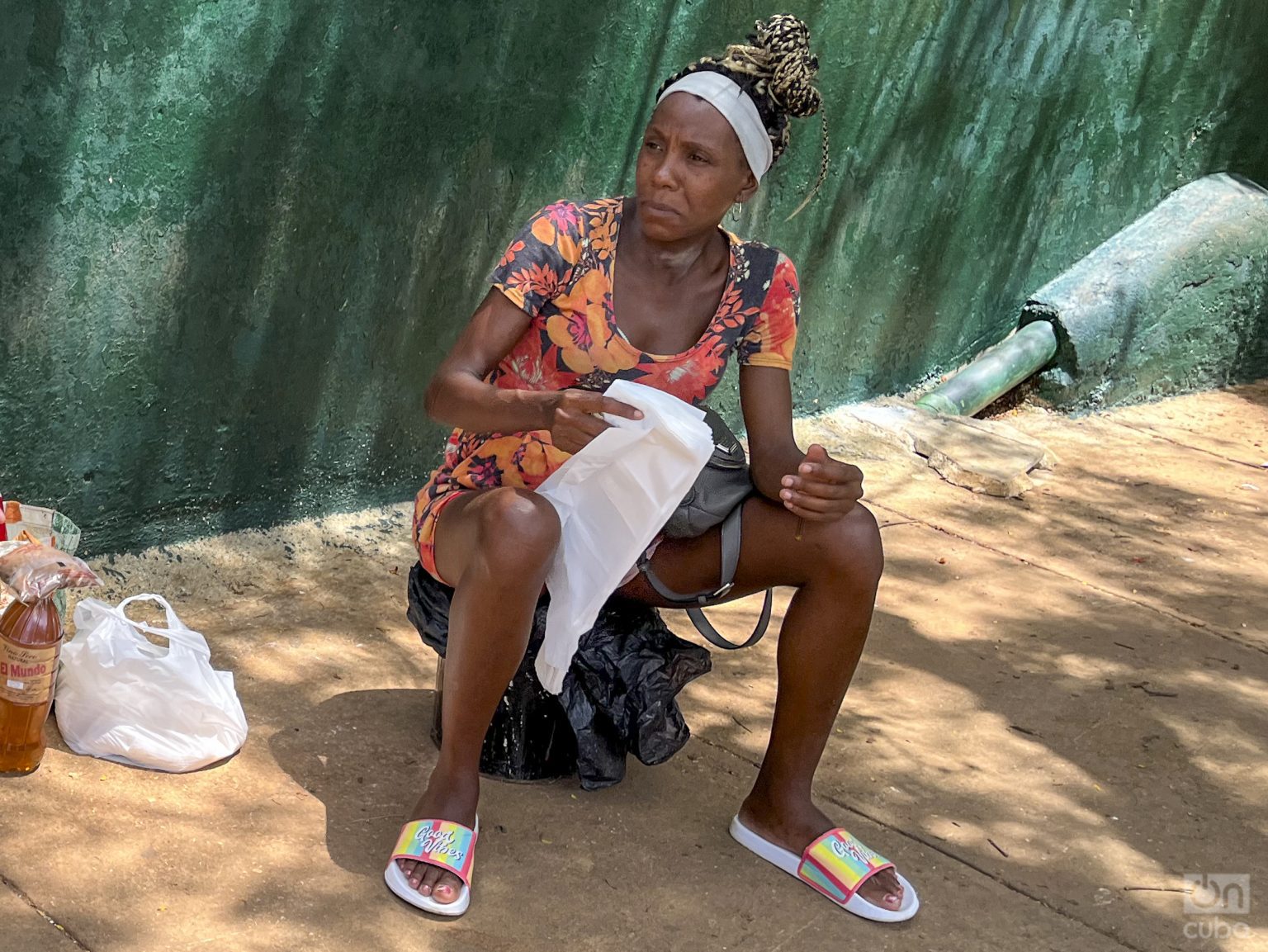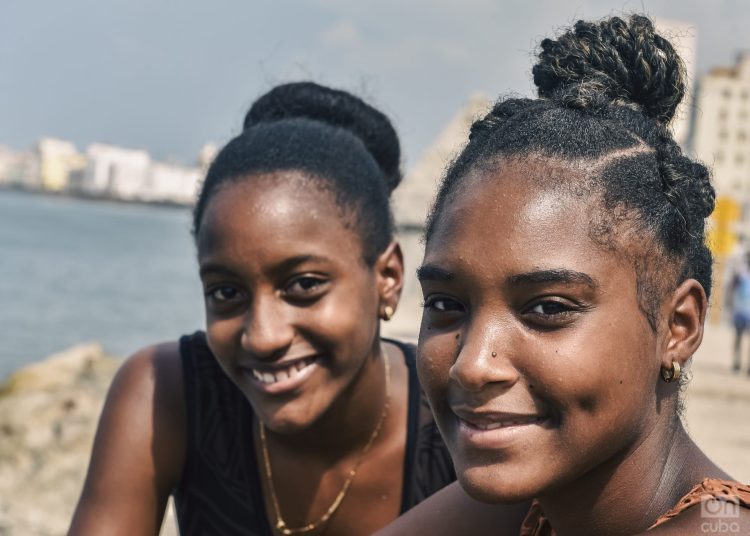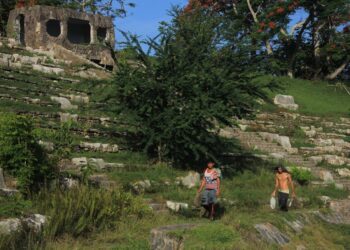Femicide monopolizes the discussions on gender-based violence, as it is its extreme and irreversible expression. It is the type of violence that takes (almost) all the spotlight of the media and feminist activism. Among the analyzes on gender inequality, physical violence has also taken center stage with increasing intensity.
This emphasis leaves at least two problems unresolved: 1) neglect of structural and veiled inequalities that produce gender-based violence and femicide, and 2) neglect of other social conditions that aggravate the problem of gender-based violence beyond this variable (“race,” territory, sexual orientation, poverty or class status, gender identity, age, disability, etc.).
A white woman from Havana, with her own assets and educated, will not have the same social experience as a black woman from a rural area who has not completed her studies and who, devoid of resources, has settled in the capital in search of economic improvements. Or that of a woman from the Guantánamo countryside, with four or more dependent children, for which she had to drop out of school and dedicate herself to working at home. Or that of a black trans woman, affected by employment discrimination due to her image, and who has an elderly person under her responsibility and care.

They are just examples that illustrate the variety of women we are and who make up Cuban society. However, we are confined to a single category that should “define” us (that of being women) but that fails to represent the plurality of inequalities that constitute us.
Each of the women mentioned can experience situations of gender-based violence within the framework of their interpersonal relationships. But, in addition, each one can be, in a particular way, vulnerable to discrimination and violence committed by institutions, employers and public servants. We are not only talking about explicitly discriminatory or violent actions, but also omissions in the fulfillment of obligations or in the guarantee of rights, subtle violence, etc.
Even the way in which we classify violence (economic, physical, sexual, psychological) makes us stop paying attention to problems that, precisely because of structuring this violence, are veiled. In the “violencemeters,” femicide and other extreme gender-based crimes always occupy the tip of the iceberg, but below that visible peak the violence and discrimination that sustain it are “hidden.”
That is why talking about structural gender-based violence means analyzing the living conditions of women and the performance — or not — of other social actors involved in them from the root; that is, from the base of the iceberg. In these plots, factors such as skin color or “race” affect the intensification of inequality or gender-based violence.
White women and racialized women in Cuba
A study published in 2017 showed that the eastern provinces had the highest gender inequality indices (GII) in Cuba, with an average of 0.328, surpassing the central and western regions with 0.303 and 0.253, respectively. The eastern region of Cuba is the one that concentrates the largest number of Afro-descendant women in the country, therefore, the low index of gender equality verified expresses that the situation is disadvantageous for a majority of Cuban racialized women.1
In this sense, the calculation of the index shows that, beyond being based exclusively on gender, we are facing a problem conditioned by the variables “race” and territory.
The eastern provinces are also the main source locations for internal migrant women, according to the National Migration Survey (ONEI, 2017). Specifically, non-white women are the ones with the greatest mobility within the country (especially black women), with an accentuated displacement towards urban areas in search of economic, labor or training improvements.
It means that there is a considerable proportion of Afro-descendant women in Cuba who, due to their situation of mobility, are more vulnerable since they do not have guaranteed basic conditions such as a roof or a decent job.
Afro-descendant women in Cuba and the Task of Reorganization (I)
For its part, the unemployment rate shown by the 2016 Population Census by Skin Color2 indicates that, in general, the racialized population (mestizo and black) is at a slight disadvantage, mainly mestizo women, whose unemployment rises to 4.4%, against the 3.3 and 3.0% shown for white and black women respectively.
White women hold more leadership and management positions at all levels of the economy, and black and mixed-race women, in greater proportion, hold unskilled or service positions. However, the unequal distribution in higher-paid jobs is not based on educational levels.
According to the same census report, black women are the ones that complete their university studies in the highest proportion with 15.01%; while white women do so with 12.92% and mixed-race women with 12.05%. Therefore, inequalities in terms of professional positions do not have to do with a lack of qualification, but with racial and gender-based biases.

According to some studies, in Cuba racialized women swell the numbers of informal employment. For example, they are the majority in street vending, caring for the elderly, caring for bathrooms, and cleaning houses and businesses.3 And in self-employment, they are more employed in cleaning, domestic hygiene, cooking, and other jobs.4
Similarly, Afro-descendant women in Cuba receive fewer remittances, travel abroad to a lesser extent, have fewer savings and, in general, have less access to foreign currency. Considering that the Cuban economy is partially dollarized, we are in the face of a deep socioeconomic disadvantage.
In the 2012 Population and Housing Census, households headed by single women (divorced, separated, single, and widows) represented 62.8% of the total number of single heads of households, against 37.2% of men. Considering the color of their skin, black women concentrated a proportion of 49.1% of single heads of households, against 40.9% and 39.5% of mestizo and white women, respectively. The difference between these groups is significant.
Households headed by single women represent for them a more intense effort to reproduce life and to provide; in addition, an extra load of physical and mental work, considering the traditional gender roles, the sexist biases in the labor market and, being black women, the racist discrimination to which they are exposed even in their own communities. The care crisis in Cuba is probably affecting women of color the most.
Added to this is the fact that black families tend to live in overcrowded conditions, in smaller house-rooms, in makeshift housing, with worse infrastructure, less access to water, and greater use of shared bathrooms, which affects quality of life and health (Population and housing census according to skin color, 2016).
Structural violence: racialized women and trans-racialized women
Living conditions according to skin color indisputably determine life expectancy; hence, non-white women in Cuba present accentuated and great disadvantages in their ability to survive in relation to white women and even white men.
Afro-descendant women have a life expectancy at birth of 76.78 years; white men 77.07 and white women 80.93. The situation worsens more when it comes to racialized women residing in rural areas.
The maxim that “women live longer than men” does not make sense in the reality of racialized women in Cuba.
According to the Cuban Observatory on Gender Equality, the child fertility rate (10-14 years) experienced a slight rise from 2015 (1.2 births per 1,000 live births) to 2020 (1.6). By province, Camagüey, Las Tunas, Holguín, Granma, Santiago de Cuba and Guantánamo stood out among those with the highest premature fertility, exceeding the rate of 2 births/1,000.
Teenage fertility between 15 and 19 years old was also around 50 births between 2015 and 2020; and the incidence in the eastern provinces is repeated, drawing attention to Granma, which exceeded 70 births to mothers between 15 and 19 years of age for every 1,000 live births.
Therefore, child and teenage fertility show its highest levels in the eastern region of the country, higher rates in rural areas than in urban areas, and black and mixed-race adolescents are the most affected by the phenomenon; especially black women, for whom the gender gaps and inequalities are accentuated taking into account the level of schooling (from 0 to 7 grades), school dropout, being “housewives,” living in rural areas and in the eastern provinces. Consequently, it is racialized young women who tend to have the highest rates of maternal mortality.
The 2019 Multiple Conglomerate Indicator Survey verified that, in the group of Cuban women aged between 20 and 24 years, 4.8% were married or in a stable relationship before their 15th birthday; 29.4% before the age of 18. In both cases, the proportion was ostensibly higher in rural areas (7% before the age of 15 and 38.2% before the age of 18) than in urban areas. It has been mentioned in other works that these figures are comparable to early unions and child marriages in Latin America and the Caribbean.
The latest National Survey on Gender Equality (ENIG, 2016) showed that racialized women between the ages of 15 and 74 had been affected to a greater extent by gender-based violence in their intimate relationships during the 12 months prior to the survey: 28.2% of the mixed-race women, against 26.1% of the black women and 26.1% of the white women.
Once again, racialized women, girls and teenagers or residents of rural territories are more exposed to structural gender-based violence.
It was estimated in 2017 that the trans population in Cuba stood at around 3,500. The data is not precise due to the invisibility of these communities in the official censuses. The majority are white trans women but with an overrepresentation of black trans women in proportion to each racial group.
Of this universe, 92.6% reach the highest level of instruction in secondary education and only 2.8% manage to graduate from a higher level. Regarding employment, 39.9% of trans people are linked to study or work, while 43% are looking for work.
In terms of gender-based violence, the figures are alarming: 47.8% received physical attacks by their partners during the year prior to the study, 57.8% were victims of sexual violence and 96.5% of psychological violence.

The role of institutions
In a recent publication, Dr. María del Carmen Zabala pointed out the lack of social research from an intersectional approach in Cuba, with gender being the category with the greatest presence. However, in those where gender and “race” were intertwined, the disadvantages of black and mestizo women were concentrated in: greater poverty with the intergenerational transmission; increased social vulnerability; less access to education; fewer opportunities in the self-employed sector and less survival capacity (life expectancy).
The absence of intersections between gender and gender identity, “race,” age, class/poverty, and territory, among others, is repeated in official censuses and surveys. The recently launched Gender Observatory itself occludes skin color (except in cases of femicide) as a marker to be analyzed simultaneously with gender, despite the fact that the racialized population is in the worst conditions.
We are in the face of a qualitative overdiagnosis of the problem of poverty, inequality and structural violence that weigh on racialized women in Cuba (including trans women). Academic centers have been alerting exhaustively about the situation, despite the low intersectionality of the studies. However, there is a gap between this over diagnosis and the official data, which do not consider the problem and, consequently, this lack threatens the development of public policies that effectively address them.
For the elaboration of this work, I have had to resort to the censuses and surveys of more than ten years ago due to lack of current figures. The data may have aged, but without public policies,5 living conditions have hardly improved. With the crises that have occurred, it is most likely that they have worsened.
In other texts6 I have mentioned the need for a specific division of labor for the problems that racialized women present in Cuba today, both in the Federation of Cuban Women (FMC) — the women’s advancement mechanism in the country — and in Parliament itself, where a work commission focused on discrimination and raciality could be created. It should also be a target in the Programs against racial discrimination and women’s advancement. Social policies and affirmative actions are urgently needed for these sectors.
At the same time, the exchange and recognition with anti-racist organizations and activisms from feminisms and from the articulation of black women is vital. An approach to the realities of precariousness of racialized and rural sectors is a starting point of the first order, with the focus on their women, including gender and sex-dissident women.
For institutional responses to be of quality and effectiveness, they have to resemble the problems they are intended to solve. Programs like EspuMás, which consists of supporting the creation of laundry cooperatives for Cuban women, have no place in communities with poor water and infrastructure. Therefore, in order to develop solutions, dialogue with the communities and recognition of their self-management and self-determination are necessary; including the participation of projects and initiatives with an anti-racist vocation or inspired by black feminism.
On one occasion when I was publishing an analysis of the situation of Cuban women of African descent during the pandemic, a reader of my column questioned me if black women “were invalids.” The answer is no. Quite the opposite. As we have seen, Cuban racialized women carry the weight of their nation’s poverty on their backs.
________________________________________
Notes:
1 Racialized populations are those assimilated as non-white and are not strictly Afro-descendants, but rather include indigenous and Asian populations and their descendants. However, the latest censuses in Cuba have replaced the term “race” with “skin color.” It is worth adding that, however, “skin color” is an insufficient category to pertinently identify the processes of racialization and the phenomena of social inclusion-exclusion of these populations.
In Cuba, in the first censuses of the colonial period, the classification of “Whites” and “Non-whites” was used, distinguishing within the latter the “Free” and “Slaves,” in turn classified as “Blacks” and “Mulattos” or “Browns.” In the 1899 Census, the “Asian, Yellow or Chinese” was included. Already for the censuses carried out in the 21st century, it was taken into account that people with “yellow” skin color were not significant from a statistical point of view, which is why they were included within the “Mestizo or Mulatto” population (similarly occurred with the descendants of indigenous groups, despite referring to them as extinct). In short, since then the denomination of “Mulatto or Mestizo” was established for those whose skin color is not considered “White” or “Black” (Population and Housing Census according to skin color, 2016, p. 9).
For the above reasons, in the text, I refer to women and/or racialized populations to name those who suffer processes of discrimination and social marginalization as a result of racism. I understand, in turn, that Afro-descendant women are racialized women. For that reason and because of the ambiguity and imprecision of the census classifications, I use the term women of color as the equivalent of women of African descent, and vice versa.
2 The population and housing census based on skin color was carried out with information from the 2012 population and housing census.
3 Fundora, G. (2016). Mujeres negras cubanas: entre la renovación del modelo socio-económico y la reproducción de la configuración cultural. Estudios del Desarrollo Social: Cuba y América Latina, 4 (4), Extraordinary Issue, 271-295
Romay, Z. (2014) Elogio de la altea o las paradojas de la racialidad. Casa de las Américas Publishing Fund.
4 Pañellas, D. (2017). El cuentapropismo en Cuba. Proyecciones sobre su evolución e impacto socioeconómico y cultural. In O. Izquierdo Quintana and H. J. Burchardt (eds.) Trabajo decente y sociedad. Cuba bajo la óptica de los estudios sociolaborales (pp. 241-265). University of Havana publishing house.
5 In Cuba there is no program that has racialized women as a specific axis of work.
6 Herrera, A. (2019). Pensando un feminismo negro en diálogo con el estado cubano. Revista De Este Lado, Year 2, Number 4, January-June 2019, Science, Technology and Gender Network, AC. Mexico, p. 101-110.










